Official national ceremonies are held at the National War Memorial in Ottawa and presided over by the Governor General of Canada. ceremonies include two minutes of silence, a Royal Canadian Air Force flyover, a 21 gun salute and the singing of "In Flanders Fields", lyrics of which are famously posted in the dressing room of the Montreal Canadiens. Wreaths are the laid at the base of the memorial and, more recently, the public places poppies on the Tomb of the Unknown Soldier.
In the days of hockey's infancy, the Toronto 228th Battalion was a member of the National Hockey Association during the 1916-17 season. They played in the league as a replacement for the Toronto Shamrocks when the Pacific Coast Hockey League raided the Stanley Cup winning Toronto Blueshirts roster in 1915, leaving owner Eddie Livingstone with only enough players for just one of the two Toronto franchises he owned.
When Livingstone transferred the roster of his Shamrocks to the Blueshirts, the Shamrocks franchise was reclaimed by the league, which was not fond in the least of Livingstone, who was a thorn in their sides, having two votes on league matters, especially considering the league consisted of just six teams in 1914-15. After a season of dormancy, the NHA awarded the franchise to the 228th Battalion in order to bring the league back up to a more workable even number of six teams.
All the players of the 228th Battalion club were troops of the 228th Battalion of the Canadian Expedition Forces of the Canadian Army, which were also known as the Northern Fusiliers. In reality, several accomplished players had been brought in to bolster the roster when they "enlisted" in the Army during the time of World War I specifically to play hockey for the 228th, as the competitiveness and success of the team was seen as a morale booster and recruiting tool by the Canadian Army in order to keep enlistment levels up.
The club took to the ice for their first game on December 27th, 1916, a 10-7 win over the mighty Ottawa Senators. They fared even better their second time on the ice, a 10-4 defeat of the Montreal Wanderers. After the New Year, the 228th shut out Livingstone's Blueshirts 4-0 on January 3rd before outlasting the Quebec Bulldogs three days later by a 16-9 margin.
The Fusiliers were brought back down to Earth when they lost to the Montreal Canadiens 6-1 on the 10th before a hard fought 1-1 tie against the Senators. The Wanderers then turned the tables on the 228th when it was their turn to win their second meeting by the same 10-4 score as the first contest.
They got back into winning form on January 20th by defeating their Toronto rivals the Blueshirts once again, this time 8-6. They closed out the first half schedule with a 12-4 thrashing of the Bulldogs before dropping a 9-4 loss at the hand of the Canadiens.
The season's first half was concluded with the 228th Battalion in third place at 6-3-1, but leading the league in goals scored, averaging 7 a game and well clear of the Canadiens 58.
Meanwhile in Europe, World War I had been in full swing since back in August of 1914, and as a Dominion of the British Empire, Canada was obliged to send troops into action.
The 228th then lost on January 31st by a score of 8-0 to the Senators, but were awarded a victory when Ottawa was found to have used an ineligible player.
Things began to unravel for the NHA when the 228th was called into service in early February. After a postponement of their game against the Wanderers on February 3rd and a loss to Toronto on February 7th in their final game, the unit was called to active duty.
February 12th's game scheduled against the Bulldogs was cancelled and the 228th was ordered to depart to join the fighting in Europe, taking away the league's highest scoring and most popular team, as well as exposing several of the players as simply hired guns when they showed up on the rosters of other NHA clubs in short order, having no interest in trench warfare and risking their lives overseas. The matter was not helped when future Hockey Hall of Famer Eddie Oatman publicly claimed the Army owed him $800 in salary as a hockey player after he was "discharged for special circumstances" from the army before the battalion left for Europe, freeing him up to play for the Canadiens.
The NHA unsuccessfully took the Canadian Army to court, seeking a $3,000 payment because of the Northern Fusiliers leaving the league. The other fallout of the departure of the 228th from the NHA would have a permanent effect on professional hockey, as the league would use the fact they were now down to an odd number of teams as a means to rid themselves of Livingstone. The NHA first suspended the Blueshirts and continued with just four teams for the remainder of the season including dispersing the Blueshirts players to the other teams and demanded Livingstone sell his franchise.
When he instead responded with his threatened lawsuit, the owners of the Canadiens, Wanderers, Senators and Bulldogs met secret from Livingstone in November of 1917 and suspended the NHA, only to reconvene a week later and form a brand new league, the National Hockey League.
Today's featured jersey is from the 1916-17 Toronto 228th Battalion Hockey Team.
Members of the 228th included Amos Arbour, a Stanley Cup champion in 1916 with the Canadiens, Roxy Beaudro, 1907 cup champion who scored the series clinching goal for the Kenora Thistles, Art Duncan, who was awarded the Military Cross for shooting down 11 enemy aircraft during the war, George McNamara, a Hockey Hall of Famer who won the Stanley Cup in 1914 with the Blueshirts, his brother Howard McNamara, who captained the 1916 Canadiens to the Stanley Cup, Gordon Meeking, George Podgers, who won Stanley Cups with Quebec in 1912 and 1916 with the Canadiens, as well as Oatman, who was also a member of the 1912 cup champion Bulldogs.

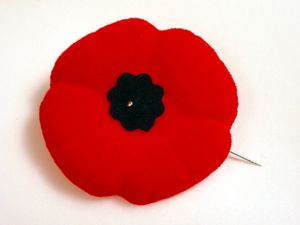
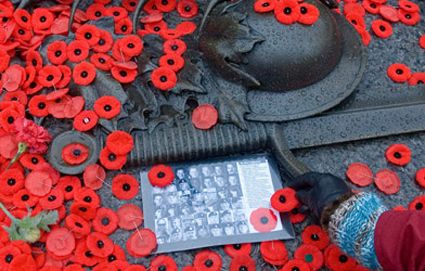
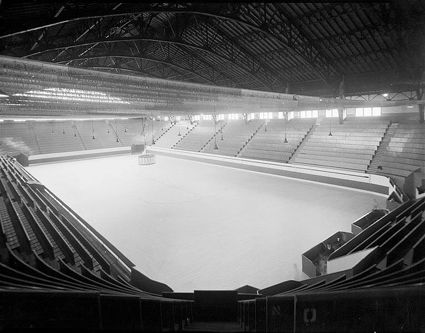
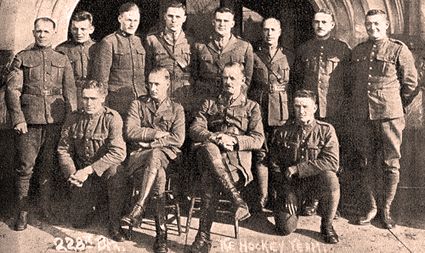
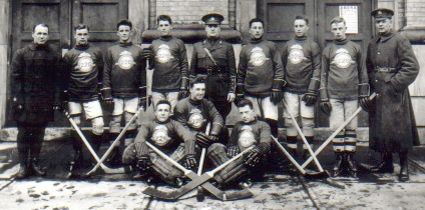
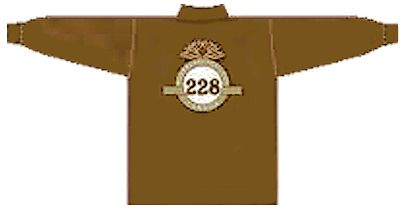










No comments:
Post a Comment
We welcome and encourage genuine comments and corrections from our readers. Please no spam. It will not be approved and never seen.